Often tagged onto ski holidays in Niseko, Rusutsu and Kiroro, Otaru is now grappling with the pressures of popularity – and it caught us off guard.
A recent trip to Hokkaido gave my partner and me the chance to return to Otaru – a town we remembered as a quaint, seaside escape popular with domestic tourists, known for its exceptional seafood and just the right amount of kitsch (think quirky snack and souvenir shops). We had last visited in 2015. Now, with our four-year-old daughter in tow, we were curious to revisit the town’s charms and introduce her to attractions like the city’s beautiful canal and the Otaru Music Box Museum – a welcome change of pace from the otherwise winter sports-heavy itinerary.
By this point in the trip, we’d already navigated the highly publicised lift lines in Furano (thanks largely to a broken chairlift) and were attuned to the overtourism narrative dominating international coverage of Japan. While the crowds in Furano had been mostly manageable and good-natured, what we encountered in Otaru felt different. The town we remembered had shifted – its character overwhelmed by chaos, its charming kitsch replaced by a more aggressive kind of commercialism. It offered a telling glimpse into how overtourism is reshaping once-idyllic corners of Japan.
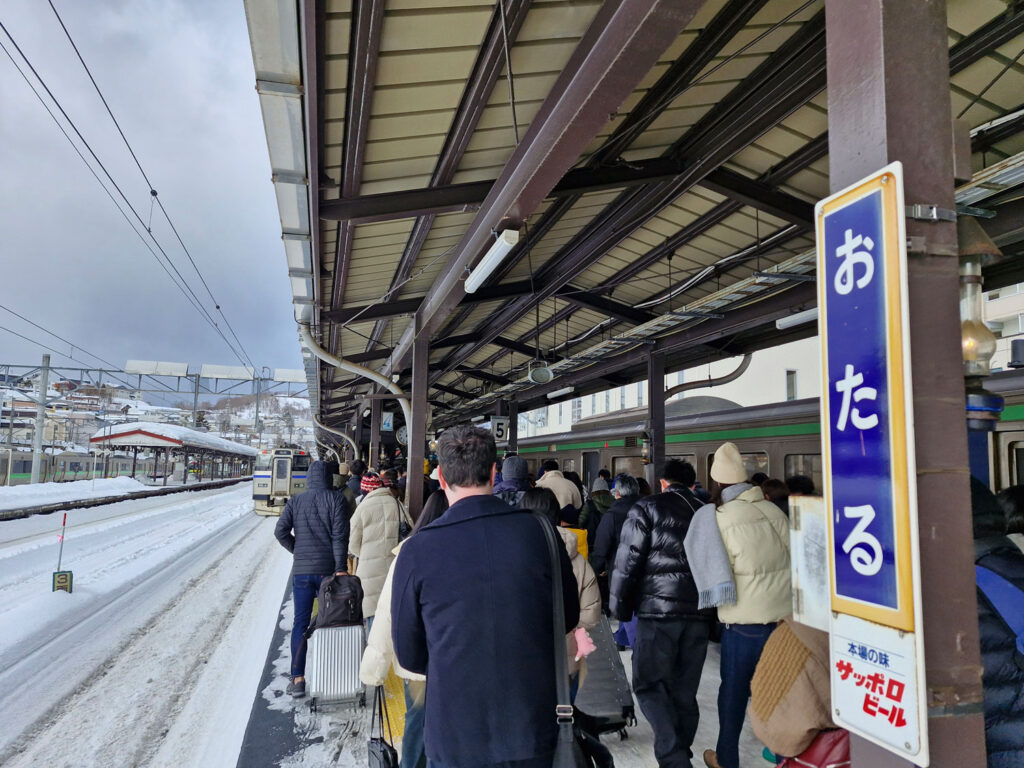
Arriving to crowds at Otaru station
On our previous visit, Otaru had felt like a quieter detour – a place that welcomed tourists but still moved at its own pace. This time, the canal district felt noticeably busier. The narrow streets were filled with visitors, many navigating via smartphone, stopping for photos, or queuing at popular spots along the historic warehouses and shopfronts. The romantic atmosphere we remembered hadn’t disappeared entirely, but it certainly felt more diluted.
“The town we remembered had shifted – its character overwhelmed by chaos, its charming kitsch replaced by a more aggressive kind of commercialism.”
None of this made Otaru unpleasant – the town remains physically beautiful and retains some of its charm – but the experience felt more packaged. And for us, traveling with a child, it was harder to find the space to simply take it in. We spent more time navigating the flow of people than connecting with the atmosphere we’d come back hoping to rediscover.
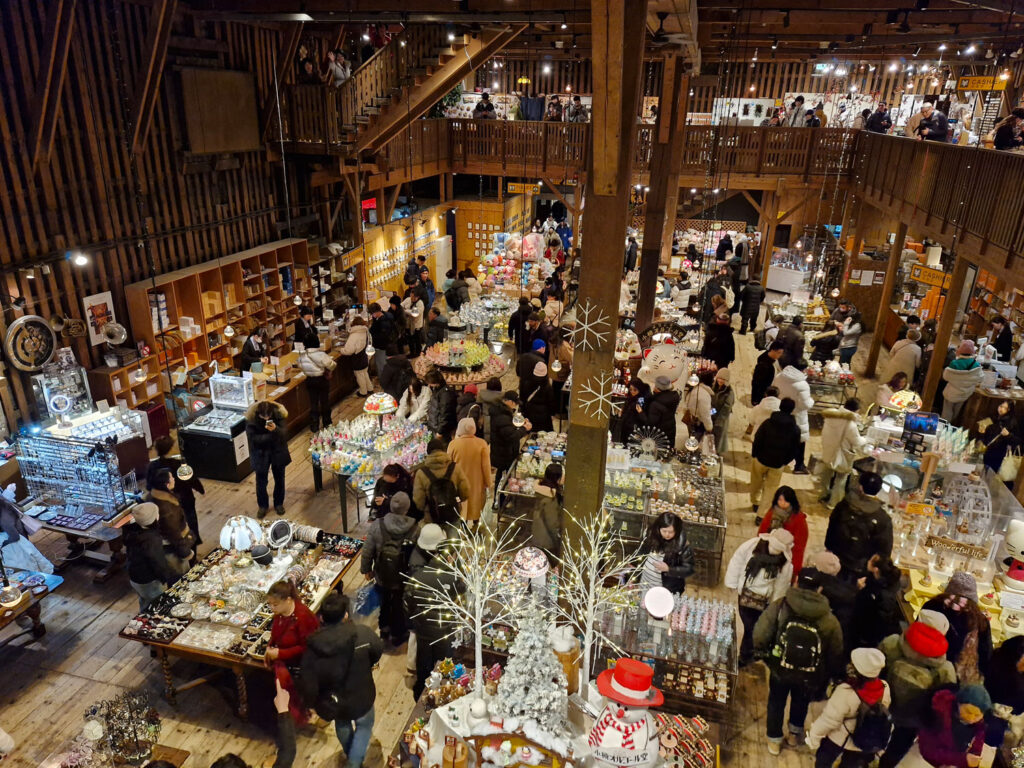
Inside the Otaru Music Box Museum
Yes, we’re part of the problem
It’s easy to frame overtourism as something caused by others – a problem of crowds, tour buses, or viral itineraries. But in Otaru, it was clear that we, too, were part of the pattern. Like many visitors, we’d returned because the town is known for its charm and accessibility, often featured in travel articles and guides. In that sense, our presence wasn’t incidental – it was part of a broader trend that’s reshaping popular destinations across Japan.
In some ways, this is where things get complicated – especially as a travel writer.
At Ski Asia, we’ve seen this tension play out firsthand. Earlier this year, we published a series spotlighting Japan’s “tiny resorts” – little-known ski areas across the country offering a slower, cheaper, and more intimate alternative to the busy Niseko-Hakuba circuit. Our main intention was to showcase off-the-beaten-track parts of Japan, but we were also adamant that shining a light on these places would likely help support ski resorts struggling financially. So while our goal wasn’t entirely altruistic, we understood that the net result would be positive for many of these resorts, some of which are operating at a loss or facing closure.
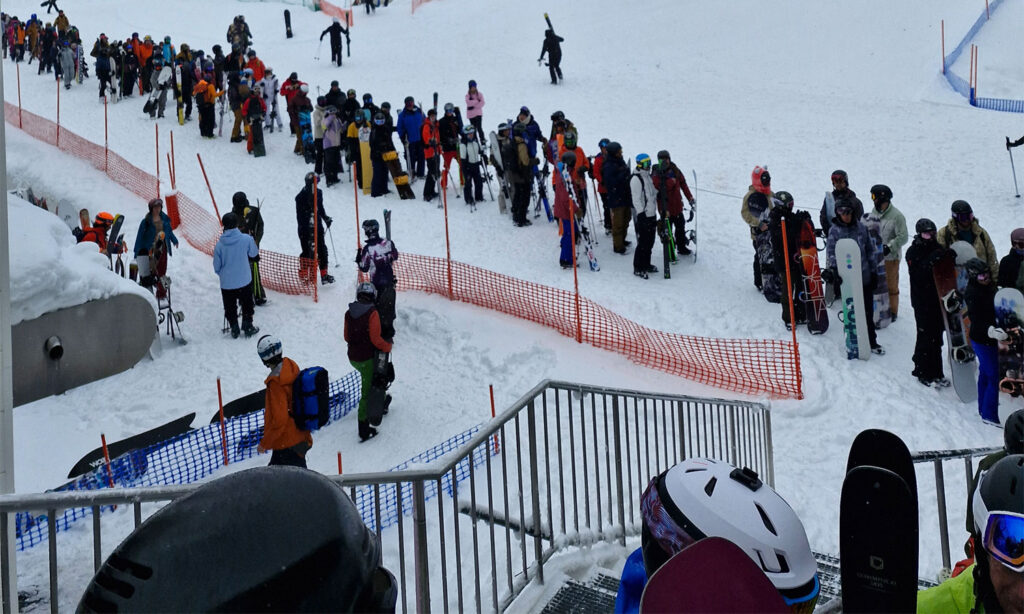
Lift lines in Furano this past season
Still, the response wasn’t all positive. Several mimicked the sentiment of one commenter, who wrote “And thanks to this article, it will no longer remain uncrowded.”
Everyone is entitled to their say – and it’s a comment that reflects a broader tension in travel media. But while keeping lesser-known destinations under the radar may help preserve their quiet appeal, it doesn’t solve the economic challenges many of these communities face. For small ski areas, visibility can be the difference between staying open or shutting down. Tourism, for better or worse, remains a vital part of keeping local services running and younger generations engaged in regional life.
In fact, Japan’s tourism dilemma is twofold: not too many tourists, but too many tourists in the same places. The big names are overwhelmed, but so too are lesser-known spots that have suddenly gone viral – often thanks to a single Instagram post, a trending YouTube video, or a cameo in a popular anime or drama. Meanwhile, beyond the spotlight, a very different story is playing out – rural depopulation, ghost resorts, shuttered businesses, and the slow erosion of local culture due to lack of economic activity.
So when we talk about overtourism, we also have to talk about under-tourism. Not as a guilt trip, but as a reframe: what if the answer isn’t fewer tourists, but better distributed ones?
Interestingly, this idea isn’t just floating around in comment sections on Facebook or Instagram – it’s being echoed at the highest levels of Japan’s tourism policy. In recent years, the Japan Tourism Agency has designated a series of “model destinations” specifically to draw visitors away from oversaturated areas like Kyoto, Tokyo, and yes, places like Otaru (which, incidentally, owes its surge in popularity to Shunji Iwai’s “Love Letter”, a 1995 Japanese film that has been reborn in clips on social platforms).
Local governments in these target regions are being supported with funds, infrastructure upgrades, and digital tools – like real-time congestion alerts and AI-driven visitor forecasts – all in an effort to spread out foot traffic more evenly across the country.
We’re also seeing a shift in how attractions are marketed and managed. Kyoto, for instance, is experimenting with earlier opening hours and dual pricing to encourage travel during off-peak times and in lesser-known districts. Meanwhile, the government is investing in cross-ministry initiatives to keep smaller communities viable through tourism – not in spite of it. These efforts align with what we’ve aimed to highlight through our Tiny Resorts series: bringing attention to lesser-known destinations to support local economies, while recognising the importance of responsible promotion and the need for ongoing conversations about readiness and impact.
Despite the challenges of overtourism, Otaru still offers moments worth experiencing – especially if you’re willing to look beyond the busiest streets. On this occasion, with only a day to explore, we didn’t have the opportunity to experience Otaru in depth. The crowds often dictated our pace, making it difficult to connect with the quieter, more authentic side of the town that still exists beneath the surface.
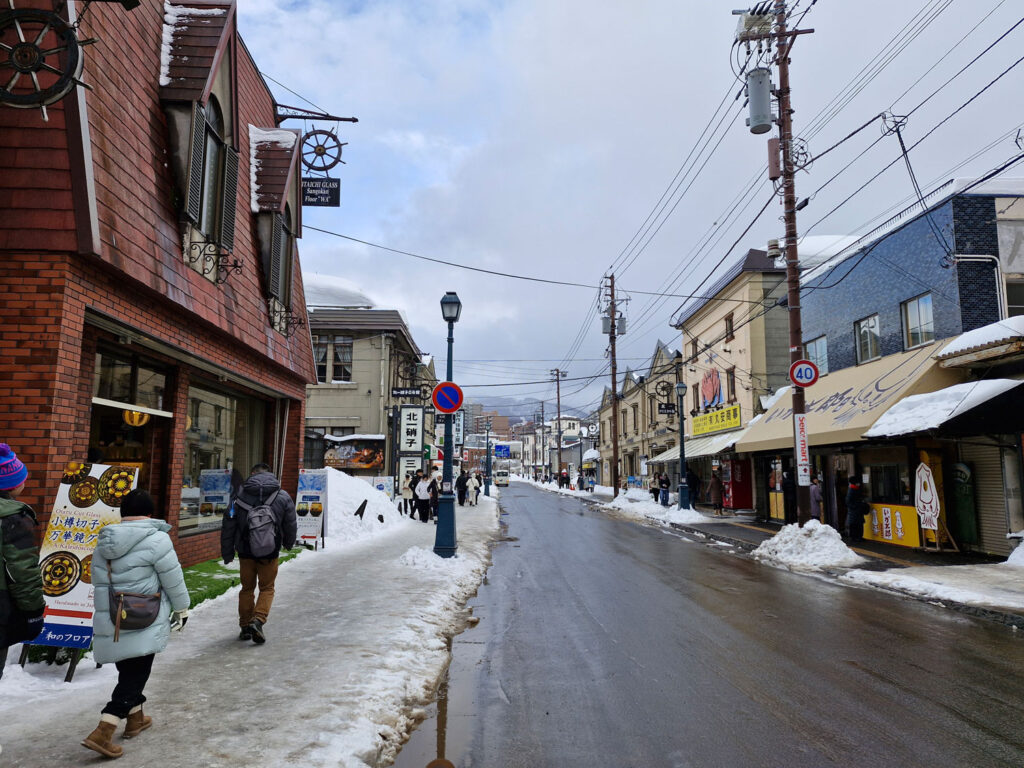
There’s still plenty to love about Otaru
While our limited time in Otaru made it challenging to fully connect with the town’s quieter side, it’s clear that meaningful experiences are still possible – they just require patience and intention. Preserving that balance will take effort from everyone involved: visitors, local businesses, media, and government alike.
Japan’s recent efforts to spread tourism more evenly, along with growing conversations about responsible travel, hint at a possible path forward.
At Ski Asia, we don’t claim to have all the answers, and we’re not immune to criticism. As a platform that (like many others) shares stories, recommendations, and sometimes spotlights places off the beaten path, we’re deeply aware of the influence our words can have. In today’s media environment – where short-form video, viral reels, and algorithm-driven travel trends can bring sudden waves of attention to once-quiet places – the challenge isn’t just about where people go, but how the conversation around those places unfolds.
YOUR CHANCE TO WIN
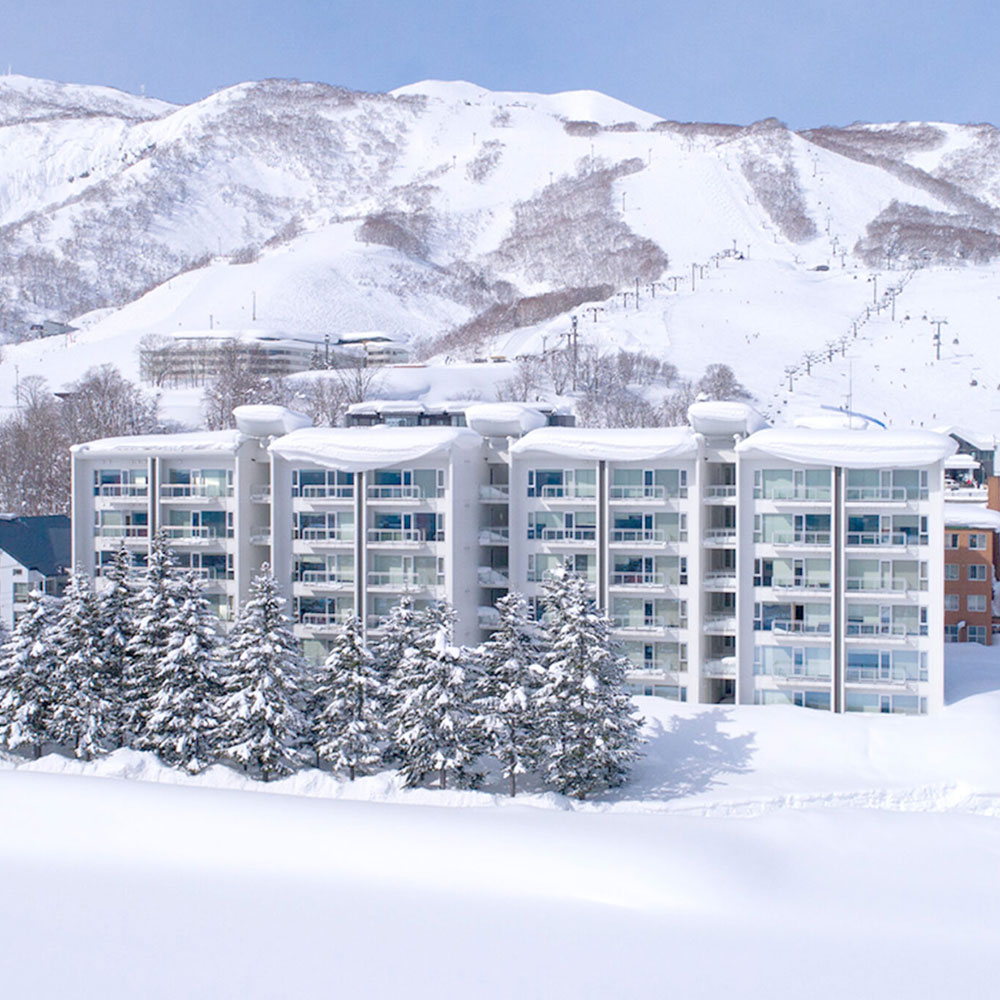 Win a 4-night stay in Niseko, Japan
Win a 4-night stay in Niseko, Japan
we have partnered with Vacation Niseko to give you the chance to win a 4 night stay for up to 4 people at the Niseko Grand Hirafu ski resort! Nestled in the heart of the action, your stay includes easy access to the slopes and Vacation Niseko’s signature local support.
Enter in seconds


AloJapan.com